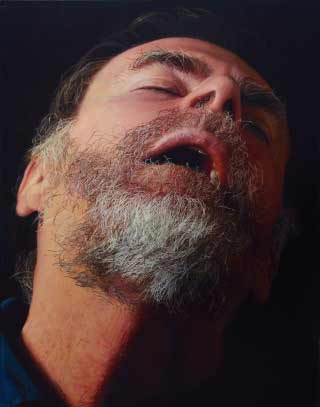Jan Esmann, Post-postmodernist painting must be figurative
Old figuration had comprehensibility as an ideal; that’s one of the reasons it can be so easily grasped, and brushed away, as mimetic. New figuration does not have mimesis as a goal. It more likely has mythos as a partial goal and in order to evoke mythos employs mimesis.

In order to go beyond nous, the mind, metanoetic figuration employs illusionistic representation to trick the mind to believe that appreciating the picture is a matter of comprehending a narrative, but at the same time the metanoetic figuration deconstructs comprehensibility by hinting at either mutually incompatible narrations or simply not hinting at any narrative at all: there is only depicted action devoid of any obvious narrative or allegorical meaning.

Post-postmodernist painting must be figurative. It must continue tradition. Not in the narrow-viewed late modernist sense that tradition only reaches a few generations back and that art was first invented in 1912. It continues it in the sense that art is non-manifest and transcends the work of art, thus any form of art can be a suitable vehicle, and since metanoesis is timeless and spaceless, it is present in all cultures and times. Thus tradition must be tangible in metanoetic art, yet by denying narrative (narrative needs chronology) metanoetic art also deconstructs the tradition it integrates in itself. This paradox can only be fully realized in figurative art.
Jan Esmann
July 30, 2016
Read Full Essay – THE NEW FIGURATIVE PAINTING, AN ESSAY ON METANOETIC ART
